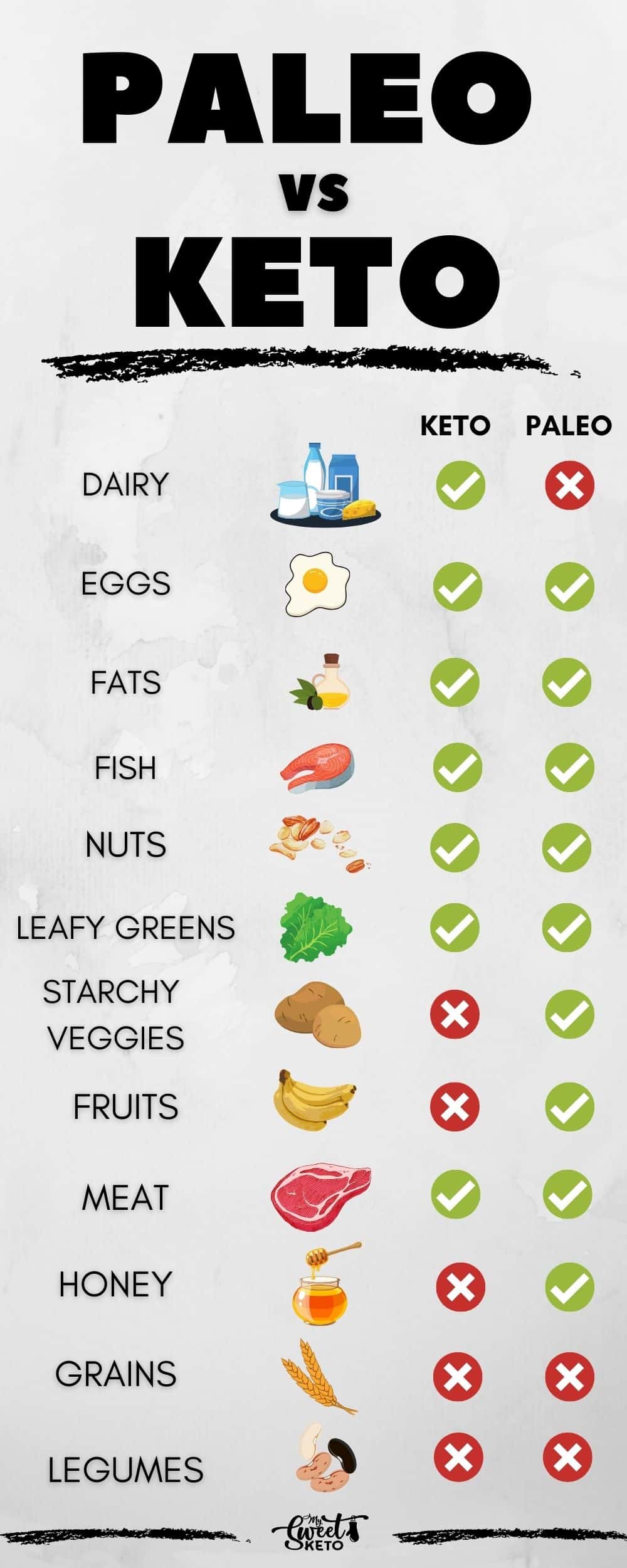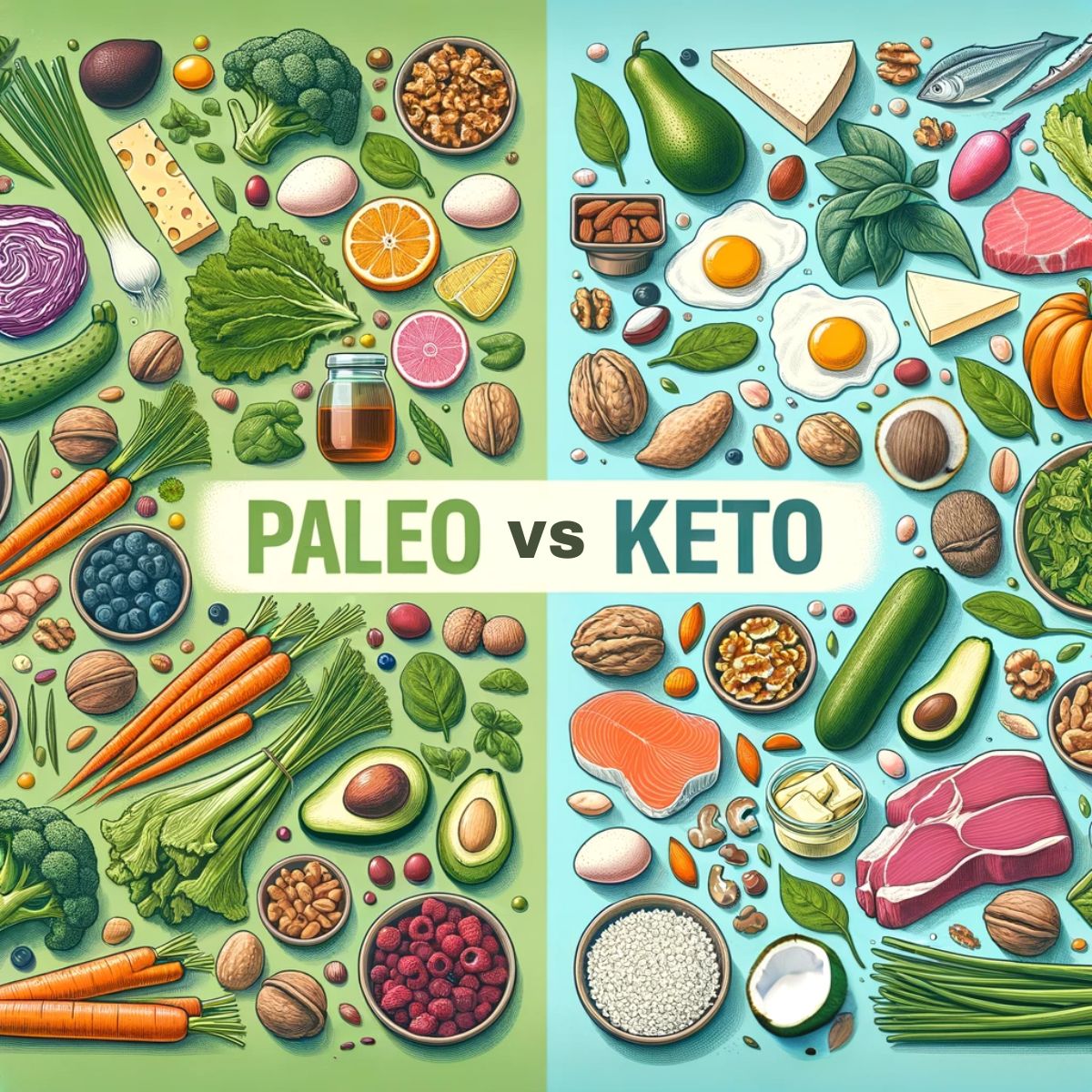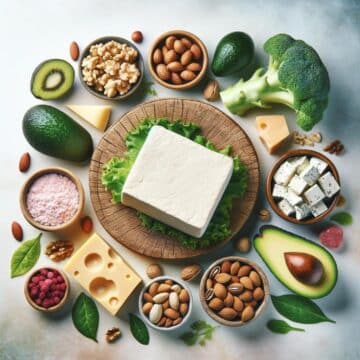Are you torn between the Paleo vs Keto diet? These two renowned low-carb diets offer unique approaches to nutrition and health, each with its own set of similarities and differences. It's time to delve into a detailed comparison of Paleo vs Keto.
In the past two decades, the spotlight in weight loss diets has shifted from fat reduction to another macronutrient: carbohydrates. This change has fueled the rising popularity of low-carb diets, prominently featuring the Paleo and Keto diets. While Paleo and Keto both fall under the "low-carb" category, their approaches and philosophies show significant contrasts.
Understanding the nuances that distinguish Paleo from Keto can be instrumental in guiding you towards the diet that aligns best with your health goals and lifestyle.
So, let's embark on a comprehensive journey to compare Paleo vs Keto, dissecting their core principles and outcomes. Keep in mind, the upcoming analysis focuses on the standard versions of the Paleo and Keto diets as they are commonly known.
Exploring the Basics of Paleo vs Keto Diets
Keto: The Ketogenic Approach
Keto, formally known as the ketogenic diet, represents a pivotal element in the Paleo vs Keto comparison. As a distinct low-carb diet, keto's primary mechanism is the production of ketones — water-soluble molecules that act as a backup fuel for your body, particularly when glucose is scarce.
Keto achieves ketone production by inducing an energy crisis akin to fasting, through significant carb restriction, typically limiting intake to 20-50g per day. This is a drastic reduction compared to the Dietary Guidelines for Americans, which recommend eating around 130g of carbs per day.. Key exclusions in the keto diet include:
- Grains
- Legumes
- Tubers
- High-Carb Sweeteners
- Most Fruit
- Candy
In a keto diet, the reduced glucose availability prompts the body to seek alternative energy sources, leading to the utilization of fat. However, instead of using fat directly, the body converts it into ketones, a more oxygen-efficient energy source. Entering a metabolic state known as ketosis, where ketones become the primary energy source, is the ultimate goal of the keto diet.
Paleo: Embracing Ancestral Eating
In the context of Paleo vs Keto, the Paleolithic (Paleo) diet, often termed the caveman or Stone-Age diet, offers a unique approach. Its primary aim is to emulate the eating habits of preagricultural humans, drawing inspiration from the diets of our ancestors.
Central to the Paleo philosophy is the premise that modern diets, particularly those that became prevalent after the Second Industrial Revolution, are fundamentally incompatible with our genes. This mismatch between contemporary eating patterns and our genetic disposition is believed to contribute to the global rise in chronic diseases. The Paleo approach also addresses concerns about modern food production, which can lead to both overnutrition and undernutrition.
While not explicitly labeled as a low-carb diet, Paleo naturally gravitates towards lower carbohydrate intake. This is largely due to the exclusion of several food groups that are major carbohydrate sources:
- Grains
- Legumes
- Potatoes
- Refined Sugar
- Milk
Conversely, the Paleo diet centers on foods such as grass-fed meat, wild-caught fish, eggs, selected vegetables, most fruits, nuts, seeds, olives, honey, and unrefined vegetable oils. This dietary composition often results in a carb intake that is lower than typical diets. In fact, one randomized trial revealed that the Paleo diet provided only about 30% of total calories from carbohydrates., which is notably below the 45-65% range recommended by the Institute of Medicine (IOM).

Discovering the Overlapping Aspects of Paleo vs Keto Diets: Commonalities in Nutrition and Health Philosophy
A key similarity in the Paleo vs Keto debate is that both diets are fundamentally low in carbohydrates.
The Paleo diet typically results in a lower carbohydrate intake compared to standard Western diets. However, the exact carb content can vary depending on individual dietary choices within the Paleo framework. On the other hand, the Keto diet is intrinsically a low-carb diet, with its very definition hinging on substantial carbohydrate restriction. Essentially, while a Paleo diet can be low in carbs, adhering to a Keto diet necessitates a low-carb regimen.
Despite their distinct approaches, Paleo and Keto share several nutritional philosophies:
- Both diets advocate for the exclusion of similar food groups, including grains, legumes, and refined sugars.
- They are centered around comparable food groups such as meat, eggs, nuts, and seeds.
- There's a mutual preference for unrefined vegetable oils over refined alternatives.
- Both diets emphasize a reduced intake of processed foods, including items like chips, candy, and frozen meals.
It's important to note that variations exist within both diets that may not strictly adhere to the above principles. Examples of such variations include "dirty keto," which may not focus on food quality, and "vegetarian Paleo," which adapts the ancestral diet to a vegetarian lifestyle.
Uncovering the Contrasting Features of Paleo vs Keto Diets: Divergences in Food Choices, Macronutrients, and Health Impacts
Keto and Paleo have as many differences as they do resemblances. So, where does keto diverge from Paleo?
Keto and Paleo differ in these areas:
- History
- Approach to nutrition
- Metabolic effects
The keto diet began as an epilepsy treatment in the 1920s and evolved into a diet many now use for weight-loss and health. The concept of the Paleo diet started in the 1970s, but its popularity soared after The Paleo Diet: Lose Weight and Get Healthy by Eating the Foods You Were Designed to Eat by Loren Cordain was published in 2002.
As far as their approaches to nutrition go, the main focus on keto should be macronutrient intake, while the quality of food and food groups are important on Paleo.
And when speaking of their effects on metabolism, keto puts your body in ketosis, the Paleo diet does not. This is one of their biggest differences.
Finding Your Perfect Low-Carb Match: Deciding Between Paleo vs Keto
Choosing between the Paleo vs Keto diet ultimately hinges on your personal preferences, health goals, and specific health conditions.
The Keto diet demands meticulous carb tracking and strict adherence to macronutrient ratios, making it a more challenging regimen for those who prefer dietary flexibility. If stringent dietary rules aren't your preference, the Paleo diet, with its focus on food quality and ancestral eating patterns, may offer a more suitable alternative.
When considering Paleo vs Keto for weight loss, Keto might hold an edge due to its ability to induce ketosis, enhancing fat burning. However, both diets offer potential health benefits and can be significant improvements over unhealthy eating habits.
It's important to note certain health conditions where caution is advised. Individuals with a history of pancreatitis, liver failure, disorders of fat metabolism, porphyrias, and carnitine deficiencies should particularly avoid the Keto diet. Moreover, those on diabetes medication should carefully monitor and adjust dosages under medical supervision when adopting either diet to prevent complications.
Ultimately, consulting with a healthcare professional is crucial before making any dietary changes. A doctor or registered dietitian can provide personalized advice on the safety and efficacy of Paleo vs Keto for your individual needs.
This conclusion provides a clear, balanced view of the factors to consider when choosing between the Paleo and Keto diets, emphasizing the importance of personal health and professional guidance.







Leave a Reply